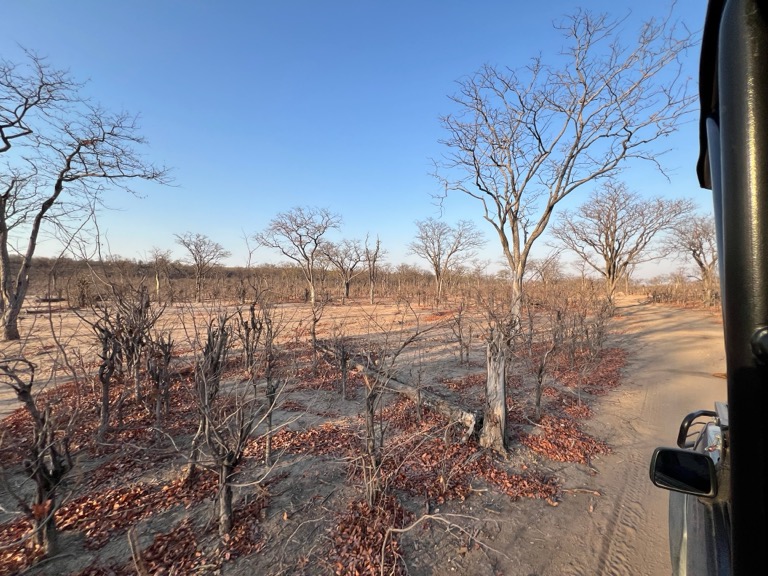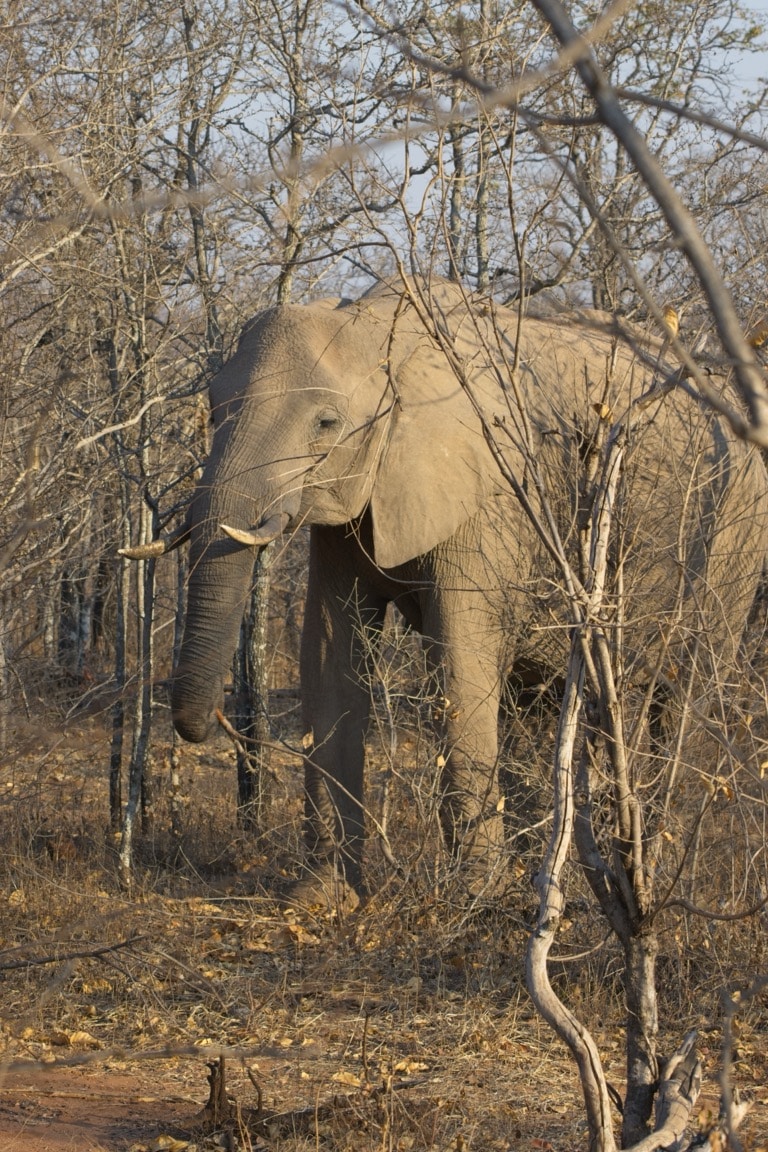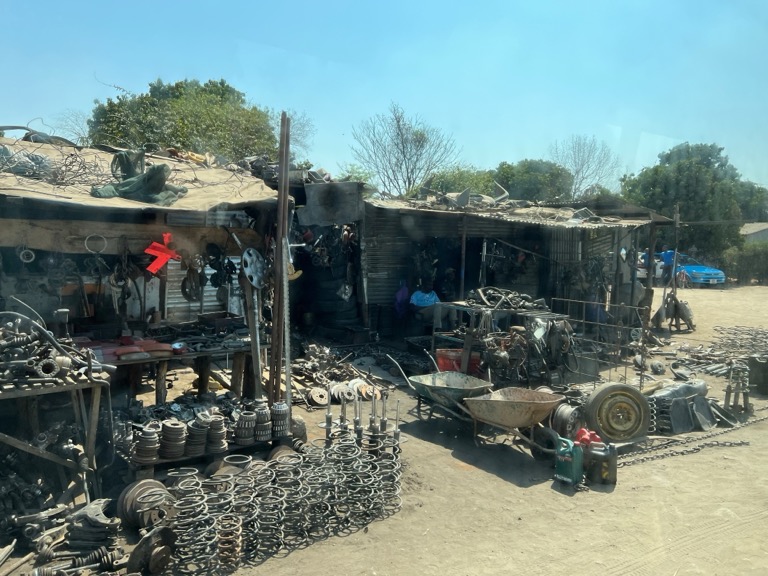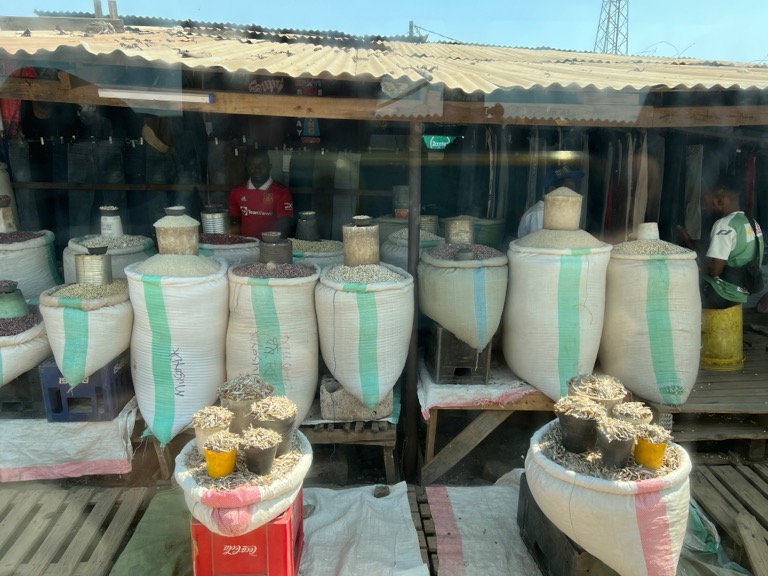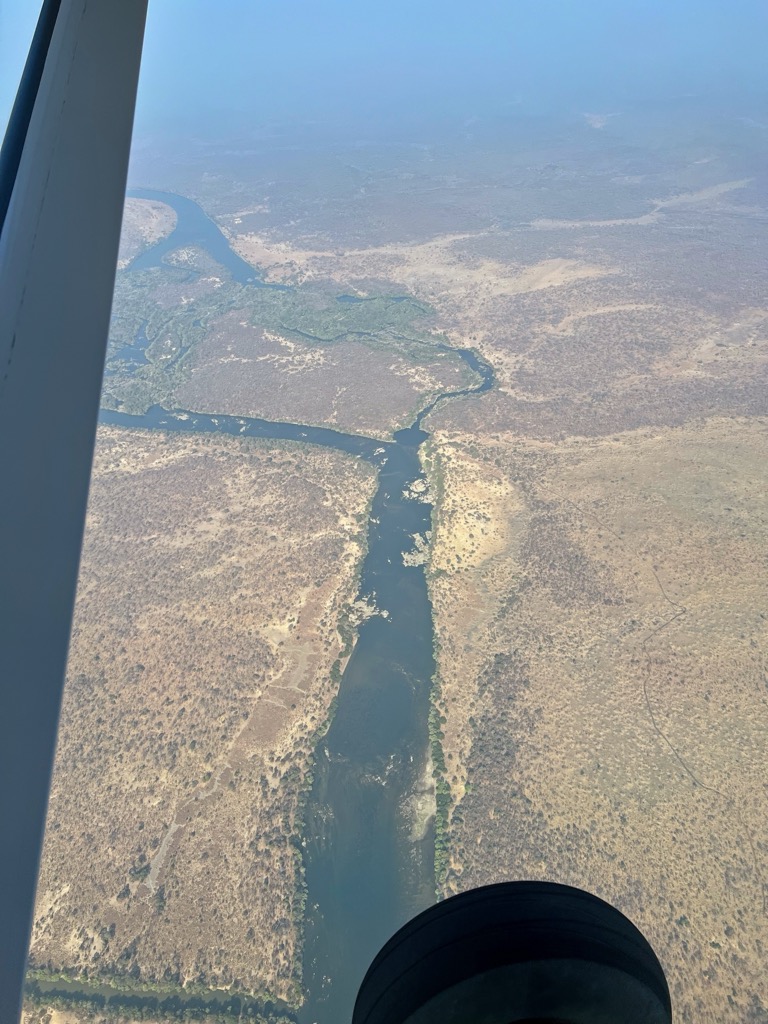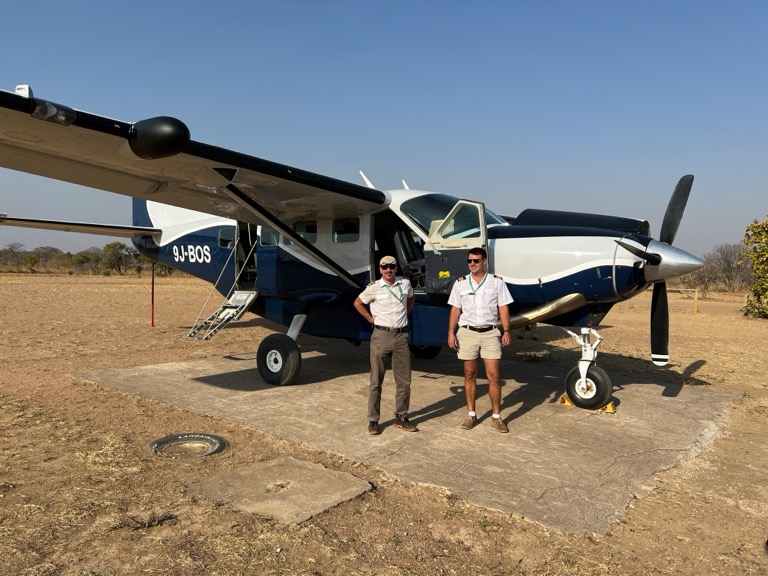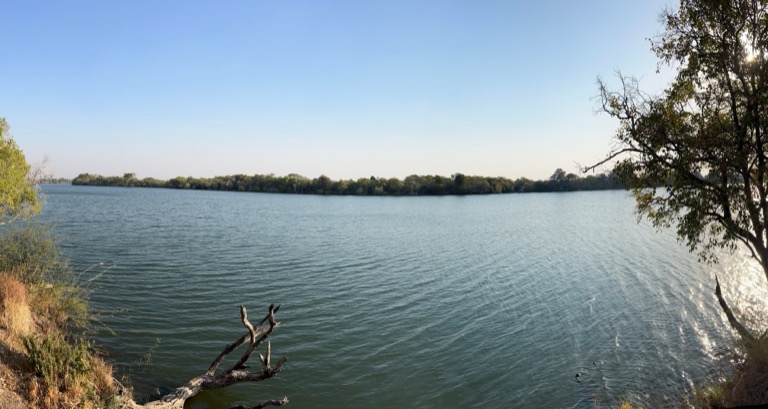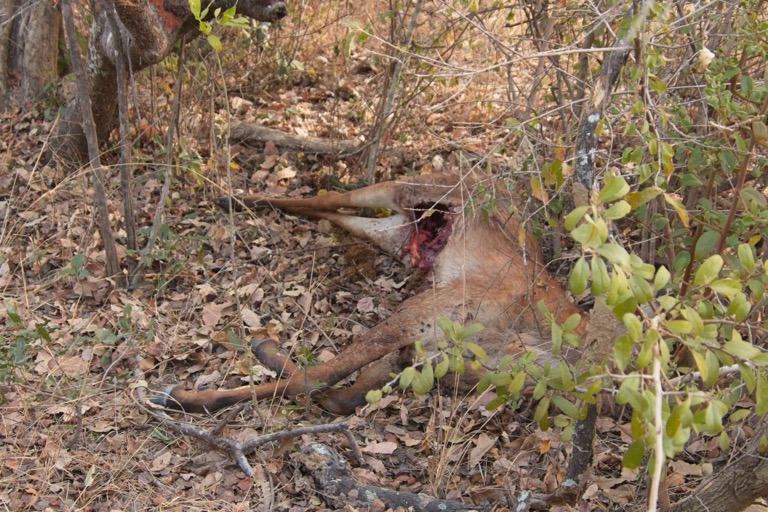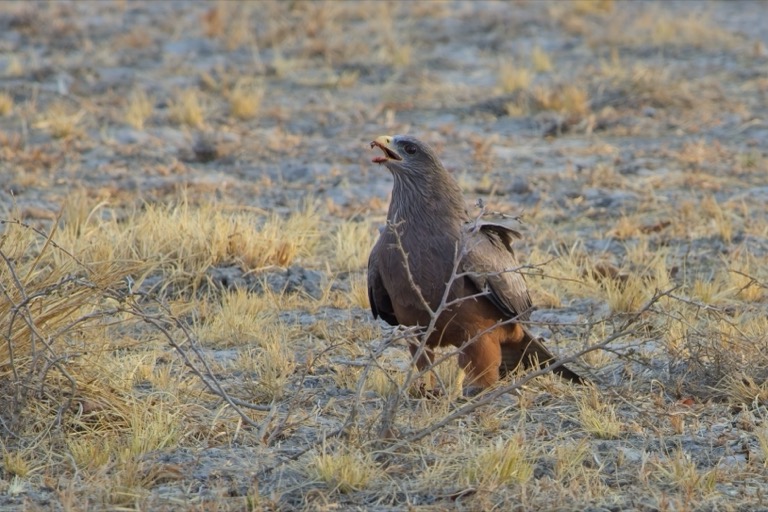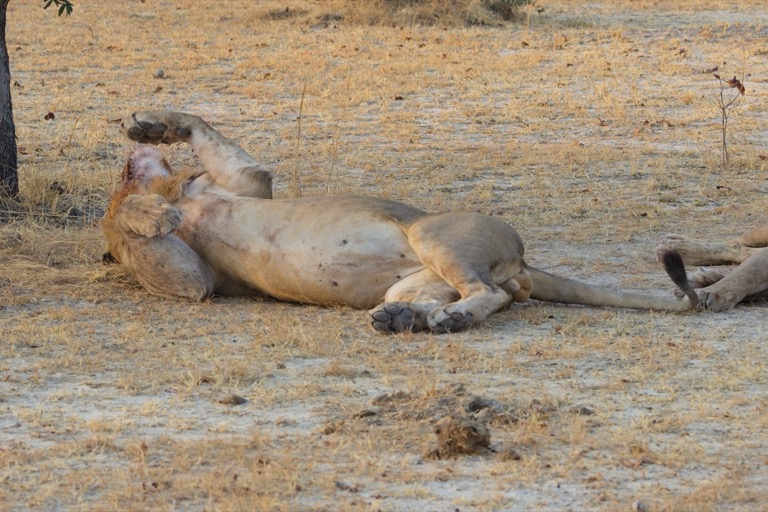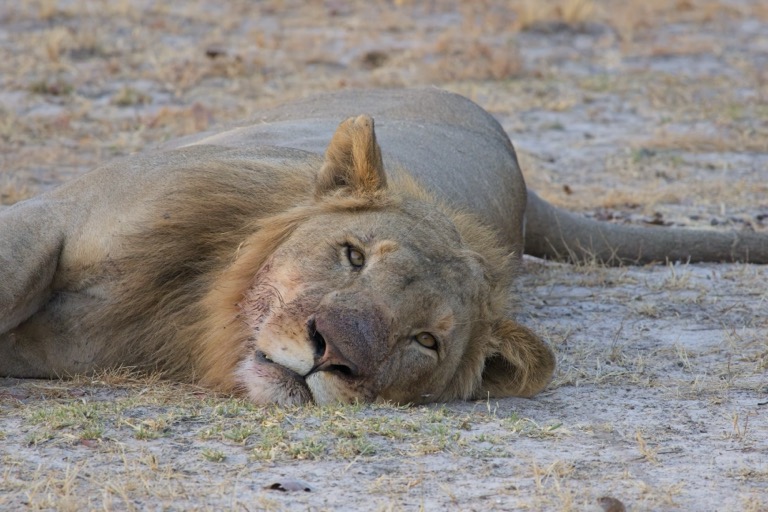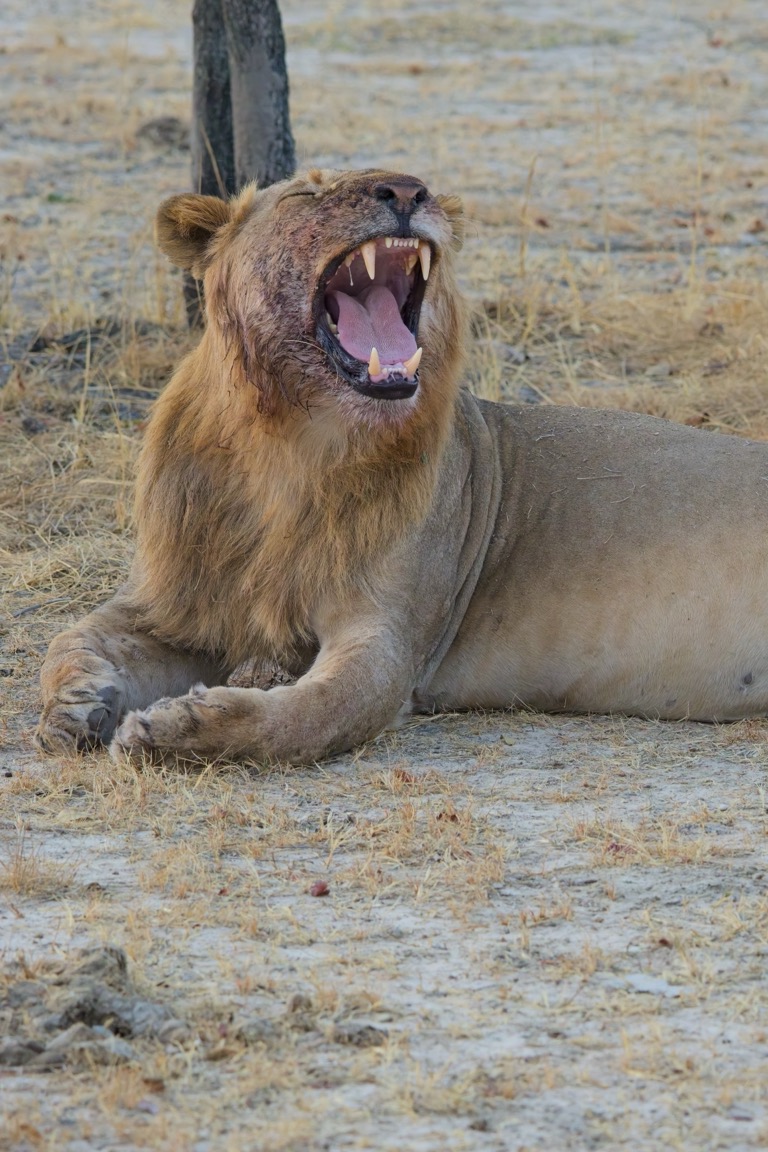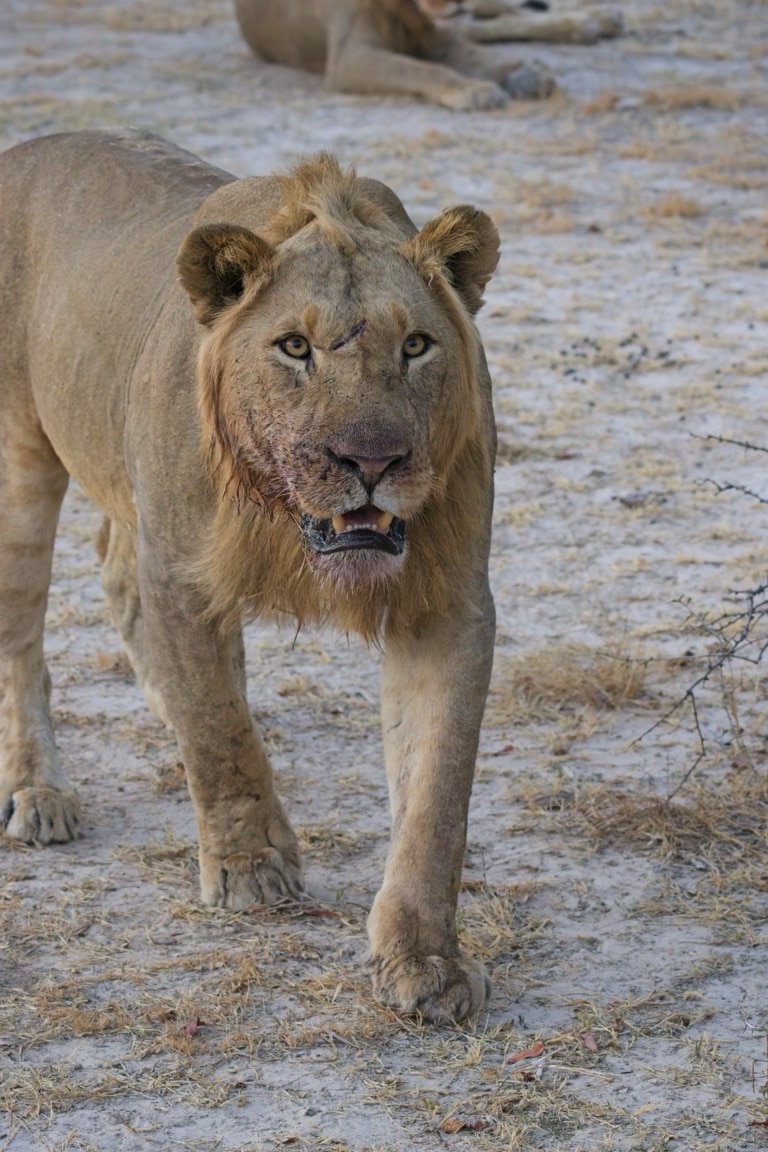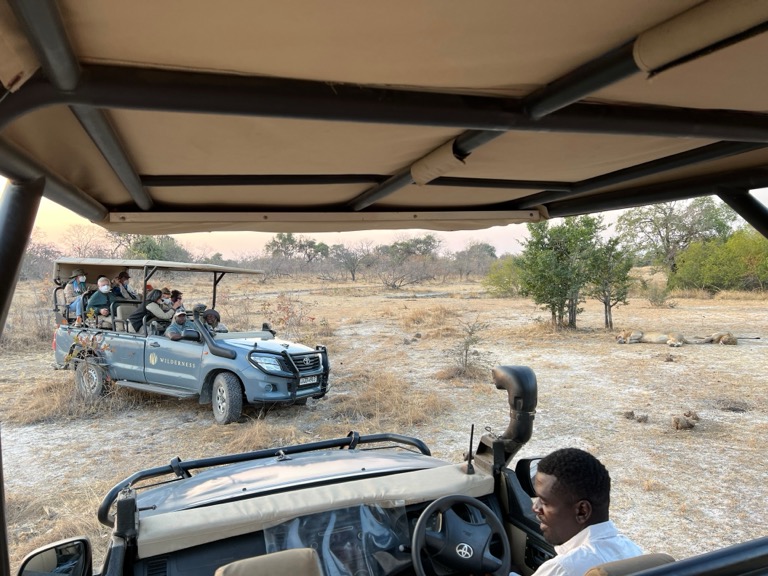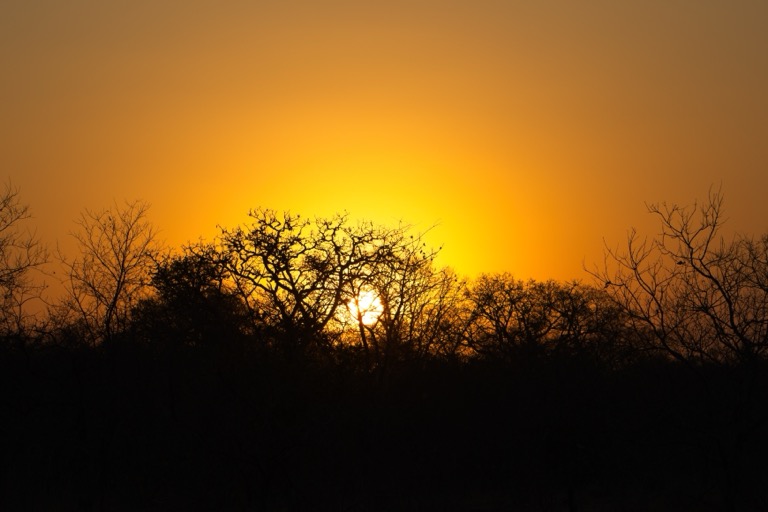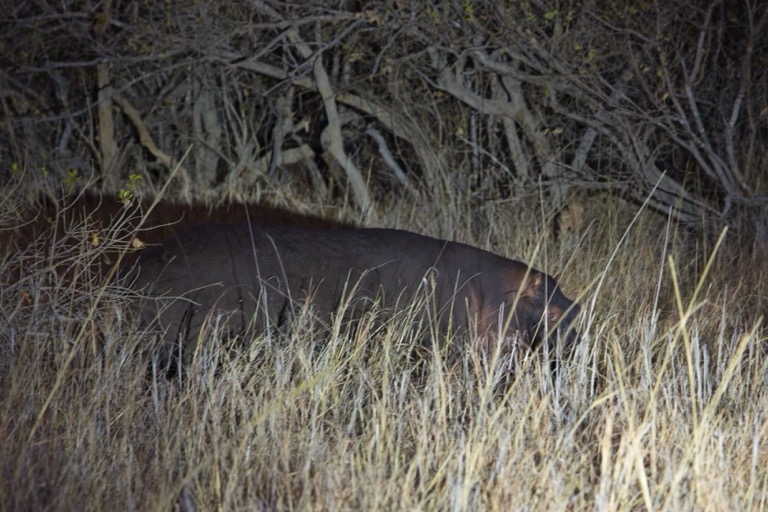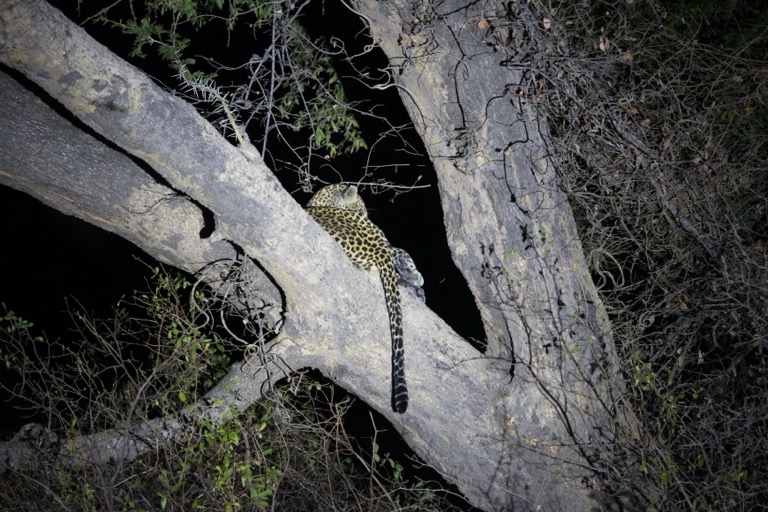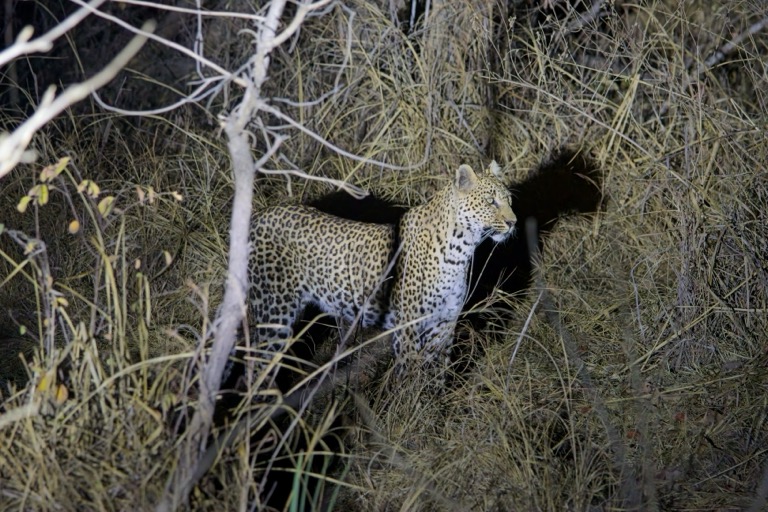on
To Kafue National Park
The wake-up call was at 6 am, leave for breakfast at 6:30 with your rolling bag packed. The housekeeping staff will take it to the trailer behind the jeep. We take our backpacks and camera bags to breakfast. There is time to run back to brush your teeth if you want.
We see some elephants on the way out. The forest is very dry with the drought.
It takes a couple of hours to drive back to Victoria Falls, then we start the boarder crossing process, first getting out to get our passports stamped for leaving Zimbabwe, then drive across the bridge over the river and stopping to get our passports stamped for entering Zambia. Our program director arranges with the bus driver to take all our passports in to get them stamped. We wait in the bus outside watching the baboons play on top of the building. Much to everyone’s surprise two baboons start breeding right above the door.
After clearing immigration, we drive to the airport in Zambia for our flight to Lufupa Tented Camp in Kafue National Park.
We drove through the market area in Livingstone, Zambia and our program director stopped briefly at one shop to pick up some chitenge that his wife had ordered as a gift for the ladies in the group. We’ll get to walk through the market when we return from the camp. I did take a few photos through the bus window.
Our group will fly in two Cessna Caravans. Donna and I and one other couple got split up, one in each plane. The plane I’m in is serial #30, made in 1998. Our pilot tells me earlier this year he had a woman on a tour from Independence, KS, where the Cessna factory is, that had made the wings for this aircraft. The panel instruments have been upgraded to a modernized glass panel.
We fly at 11,500 ft for about 90 minutes to get to the airstrip next to the camp. Our pilots will overnight here and then take another group out in the morning.
After arriving at the camp, along the river, the guides told us that two lions with a kill had been spotted in the area. Our program director gave us a choice to follow the original plan to have about an hour to settle into our rooms, or to quickly get ready to go see the lions. The group chose to quickly go.
These are two young male siblings that hunt together. They had killed a roan antelope and had started eating on it. It may feed them for a couple of days. They just finished eating and haven’t cleaned up yet. They will hang around and guard it from being stolen.
While watching the lions, a Black Kite caught something on the ground opposite the lions.
Lions in some ways behave like big house cats. They roll over.
Lions are lazy and doze. They yawn and go back to dozing.
One got curious and came closer, within 15-20 feet before flopping down. Remember the jeeps are open. With any dangerous animal encounter, we have to stay quiet, keep hands and feet in the jeep, and stay seated. This way, the animals see the people in the jeep as part of the jeep which is much bigger than they are.
This is what watching lions looks like.
The sun is setting as we head back to camp.
The guides use spotlights to look for animals on our way back. Hippos leave the river to graze at night.
The first jeep spotted a leopard in tree.
When we were a few hundred meters from camp, we saw a leopard along the road headed away from the camp. There is a reason that we are not allowed to be outside the tent after dark without one of the guides.
